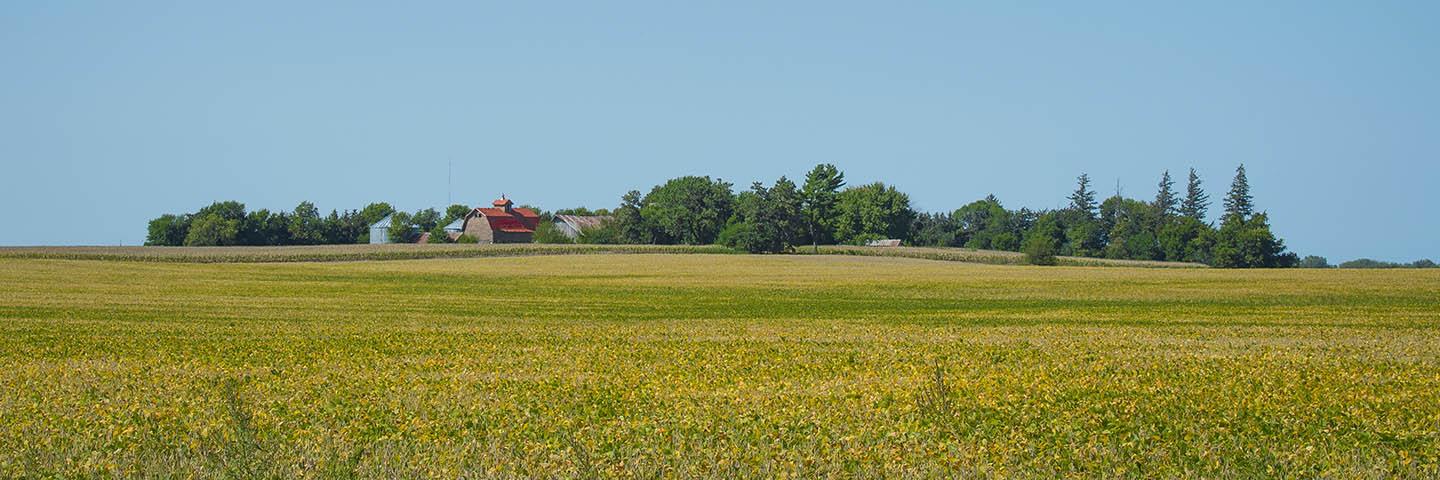
The Conservation Stewardship Program (CSP) helps you build on your existing conservation efforts while strengthening your operation.
Have you ever looked across your property and thought about some land management goals you would like to take to the next level? Maybe we can help.
The Conservation Stewardship Program (CSP) helps you build on your existing conservation efforts while strengthening your operation. Whether you are looking to improve grazing conditions, increase crop yields, or develop wildlife habitat, we can custom design a CSP plan to help you meet those goals. We can help you schedule timely planting of cover crops, develop a grazing plan that will improve your forage base, implement no-till to reduce erosion or manage forested areas in a way that benefits wildlife habitat. If you are already taking steps to improve the condition of the land, chances are CSP can help you find new ways to meet your goals.
What is the Conservation Stewardship Program?
CSP helps agricultural producers and forestland owners maintain and improve their existing conservation systems and adopt additional conservation activities to address priority resources concerns. Participants earn CSP payments for conservation performance ‐ the higher the performance, the higher the payment. Through CSP, participants take additional steps to improve the resource conditions on their land—soil, water, air, plants, animals (both domestic and wildlife), and energy conservation. For more information, visit the national CSP web page.
How to Apply
Submit a completed Conservation Program Application and a map delineating your entire agricultural or forest operation to your local NRCS Office. Applicants with both agricultural and forest land can submit one application and indicate if they are requesting consideration under agricultural land, forest land, or both. Applicants requesting consideration as a veteran, socially disadvantaged, or beginning farmer must self‐certify by marking all applicable status boxes on Form NRCS‐CPA‐1200.
Beginning in 2020, applicants can request consideration under an organic option if 75 percent of the operation is certified organic or transitioning to organic. The Conservation Stewardship Program for Organic Producers brochure provides an explanation of how CSP enhancements can be used to assist organic producers.
When to Apply
NRCS accepts applications on a continuous basis throughout the year and evaluates all applications received by specific application submission dates.
Program Contacts
Ashley Lenig
Conservation Program Manager
717-237-2204
Ready to get started?
Contact your local service center to start your application.
How to Get Assistance
Do you farm or ranch and want to make improvements to the land that you own or lease?
Natural Resources Conservation Service offers technical and financial assistance to help farmers, ranchers and forest landowners.

To get started with NRCS, we recommend you stop by your local NRCS field office. We’ll discuss your vision for your land.
NRCS provides landowners with free technical assistance, or advice, for their land. Common technical assistance includes: resource assessment, practice design and resource monitoring. Your conservation planner will help you determine if financial assistance is right for you.
We’ll walk you through the application process. To get started on applying for financial assistance, we’ll work with you:
- To fill out an AD 1026, which ensures a conservation plan is in place before lands with highly erodible soils are farmed. It also ensures that identified wetland areas are protected.
- To meet other eligibility certifications.
Once complete, we’ll work with you on the application, or CPA 1200.
Applications for most programs are accepted on a continuous basis, but they’re considered for funding in different ranking periods. Be sure to ask your local NRCS district conservationist about the deadline for the ranking period to ensure you turn in your application in time.
As part of the application process, we’ll check to see if you are eligible. To do this, you’ll need to bring:
- An official tax ID (Social Security number or an employer ID)
- A property deed or lease agreement to show you have control of the property; and
- A farm number.
If you don’t have a farm number, you can get one from USDA’s Farm Service Agency. Typically, the local FSA office is located in the same building as the local NRCS office. You only need a farm number if you’re interested in financial assistance.
NRCS will take a look at the applications and rank them according to local resource concerns, the amount of conservation benefits the work will provide and the needs of applicants. View Application Ranking Dates by State.
If you’re selected, you can choose whether to sign the contract for the work to be done.
Once you sign the contract, you’ll be provided standards and specifications for completing the practice or practices, and then you will have a specified amount of time to implement. Once the work is implemented and inspected, you’ll be paid the rate of compensation for the work if it meets NRCS standards and specifications.

